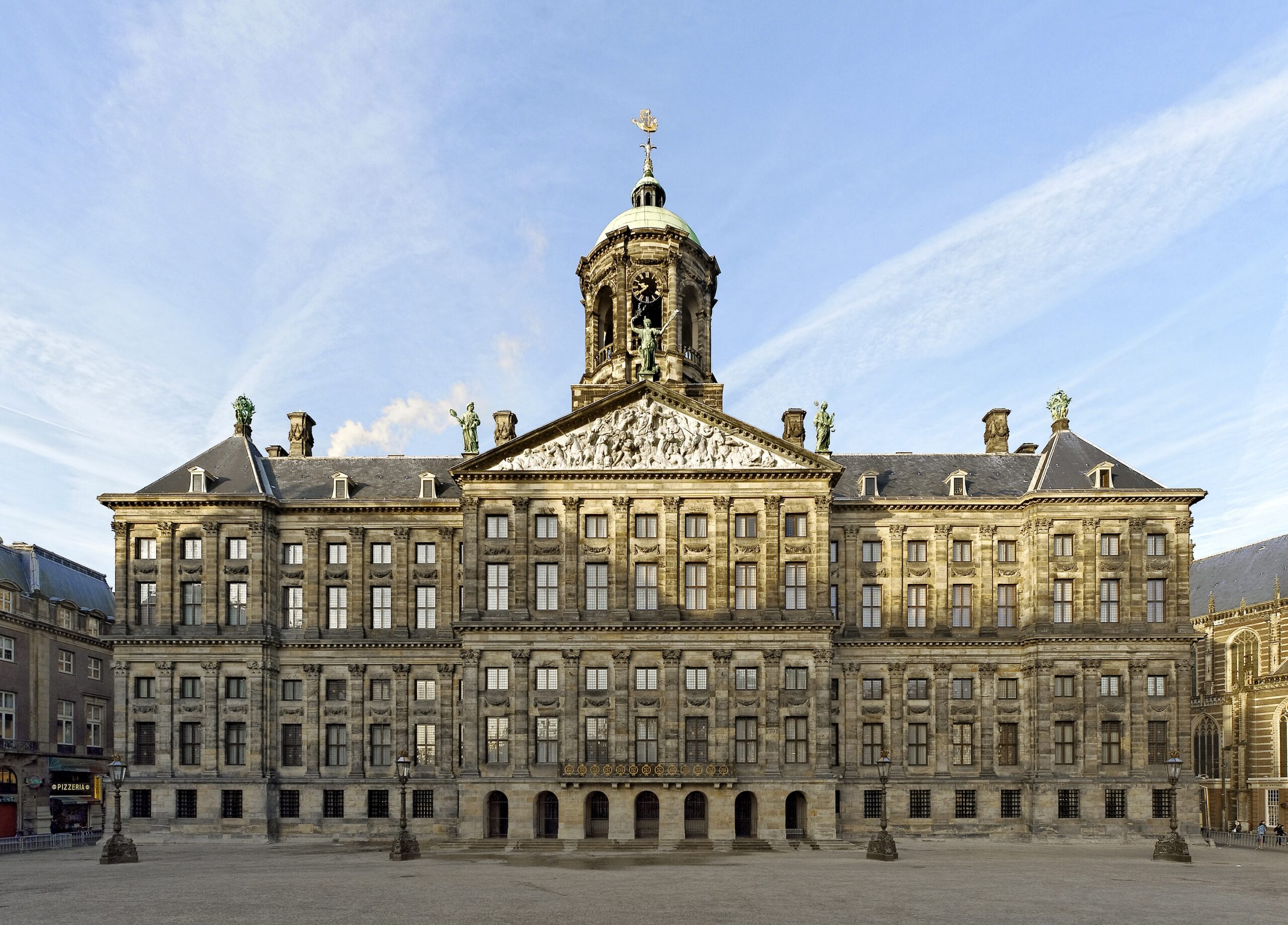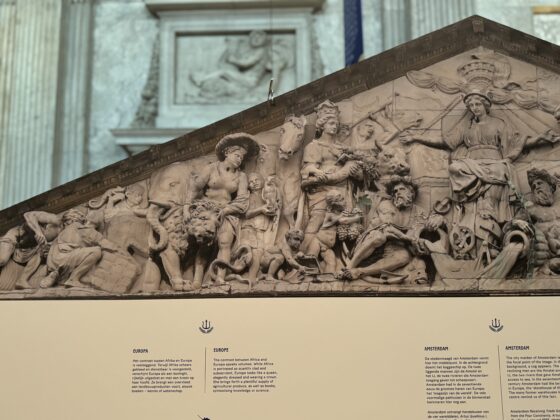“Subservient” Africa on the rooftop of Amsterdam palace
Senay Boztas
On a royal palace once called the “eighth wonder” of the world stands a decorative sculpture portraying Africa in a “subservient” light.
A new exhibition at the palace in Amsterdam – built in the 17th century as Amsterdam’s magnificent city hall – reveals what precisely is on the roof of this 20-metre high building.
Alongside perfectly-tuned Hemony bells, a giant wind vane and a 3,000 kilo statue of Prudence, the exhibition reveals detailed images of a “tympanum” panel portraying Amsterdam dominating the world.
Europe is represented on one side by the grand – and fully clothed – city maiden, surrounded by Africa and Asia paying tribute. Africa, meanwhile, is portrayed by an almost naked woman, her head bowed, several crouching men and exotic animals.
“The contrast between Africa and Europe speaks volumes,” a board in the exhibition explains. “While Africa is portrayed as scantily clad and subservient, Europe looks like a queen, elegantly dressed and wearing a crown.”

Many of the decorative items from the roof are on display and being restored during roof maintenance work, however the tympanum is still in place, high over the city. Marjan Pantjes, curator of the exhibition, said they chose to display a picture of it as it represents a history that they did not want to ignore.
“The whole roof is really about wealth and about power and there are many angles that you can take on that,” she said. “The west tympanum, which is now being restored, is clearly about the hierarchy from back then and it is clear that Amsterdam sits in the middle and is receiving goods. We look at that very differently now, but a lot of people are not even aware that this image is up there.
“This is an invitation to look up and ask: do you see what story is being told? What message does it have? What do you think about it now? And let’s talk about that.”
The exhibition also shows a video of historian Jennifer Tosch, founder of Black Heritage Tours, going up onto the roof to see the tympanum herself. Looking at the life-sized figures on the wall carving, she called it a story about “the glory of the so-called Golden Age” and one that should be preserved.
“The ship is central, transporting all of these treasures from around the world,” she said. “It is telling a complete story, [but] from a broader perspective, this nation exploited the people who could produce these products, exploited the land itself, and that was being transported to Amsterdam.”
She was particularly moved by the quality of the carving of 17th century Africans. “They were not just servants or submissive,” she said. “And I am feeling emotional because our ancestors, all our ancestors, were always part of the story. Maybe not in equal relations, but not erased.”
Tosch added that it was important to discuss such images rather than hide them away. “There is always an ongoing debate about what we do with the symbols of this colonial past,” she said. “I believe if we removed all these symbols, we are in danger of willfully forgetting again and erasing this past. This is a cultural archive that you won’t see in a museum, the invisible in plain sight, making the hidden history visible.”
The tympanum has similar scenes to one of the sides of a golden coach made in the late 19th century and traditionally used for ceremonial events. Following a series of protests, the coach was retired in 2022 by king Willem-Alexander until a time “when the Netherlands is ready for it” and modern-day experiences of discrimination cause less “pain”, he said.

The palace, by contrast, was built at the peak of the Netherlands’ colonial power and wealth, in 1648. Constructed with a main hall to catch the light at all times of day, it took 20 years to complete (including a decade for the roof). The building was designed by architect Jacob van Campen and no expense was spared in its decoration – at ground level as well as high above the city.
Pantjes told Dutch News that she agreed with Tosch that all of its elements tell a story. “This cultural archive that you have does actually advocate for all those people from different parts of the world: they were always in the story, maybe not always in an equal way, but let them take ownership of this kind of representation,” she said. “And on the basis of this object – an element of this roof – we can look ahead together.”
Look Up! A roof full of stories to tell opens on June 29 and runs until September 22
Thank you for donating to DutchNews.nl.
We could not provide the Dutch News service, and keep it free of charge, without the generous support of our readers. Your donations allow us to report on issues you tell us matter, and provide you with a summary of the most important Dutch news each day.
Make a donation